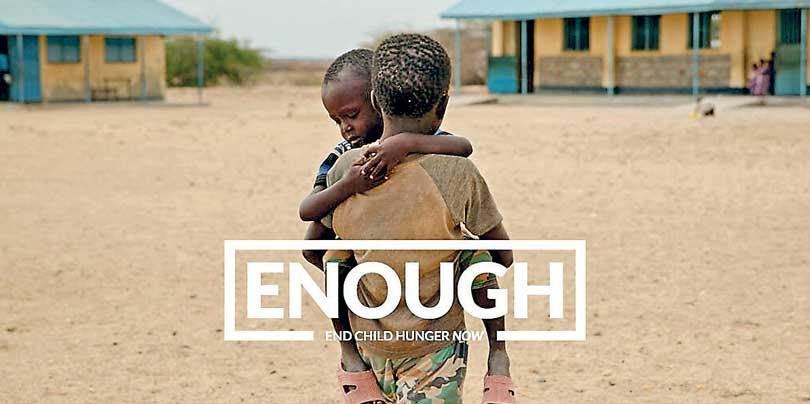26 Mar 2024 - {{hitsCtrl.values.hits}}

Statistics further suggest that the Asia-Pacific region is home to half of the world’s undernourished children, while Sri Lanka has the second-highest rate of acute malnutrition among children under five in South Asia.
 In early March, Sri Lankan health authorities including the Health Ministry and the Family Health Bureau rejected an alarming report published by The Lancet – the British medical journal, which revealed that the country’s child malnutrition levels are at their worst. But previous reports published by international organisations such as the Food and Agriculture Organisation (FAO) and the UNICEF also indicated similar trends.
In early March, Sri Lankan health authorities including the Health Ministry and the Family Health Bureau rejected an alarming report published by The Lancet – the British medical journal, which revealed that the country’s child malnutrition levels are at their worst. But previous reports published by international organisations such as the Food and Agriculture Organisation (FAO) and the UNICEF also indicated similar trends.
Statistics further suggest that the Asia-Pacific region is home to half of the world’s undernourished children, while Sri Lanka has the second-highest rate of acute malnutrition among children under five in South Asia. It is against this backdrop that World Vision, an internationally known humanitarian aid, development and advocacy organization recently launched its ENOUGH Campaign in Sri Lanka and the Asia-Pacific region, to become a force against child hunger.
Vulnerable communities
 With its presence among remote communities in the country, World Vision has initiated many programmes to assist vulnerable communities in overcoming hunger and poverty. Speaking at the launch, World Vision Lanka National Director Dr. Dhanan Senathirajah said that there is a silent emergency ripping the globe and robbing its children of their future. “We’re in a global food crisis. Our food systems are broken. Mountains of food are thrown away every single day while many children go hungry. If every person in Sri Lanka wasted one grain of rice they have wasted enough rice that would have served a mid-day meal for 7,000 children. If there’s enough food to waste, how can there be hungry children? It is heartbreaking. A lot has been done over the years to address child-hunger and malnutrition.
With its presence among remote communities in the country, World Vision has initiated many programmes to assist vulnerable communities in overcoming hunger and poverty. Speaking at the launch, World Vision Lanka National Director Dr. Dhanan Senathirajah said that there is a silent emergency ripping the globe and robbing its children of their future. “We’re in a global food crisis. Our food systems are broken. Mountains of food are thrown away every single day while many children go hungry. If every person in Sri Lanka wasted one grain of rice they have wasted enough rice that would have served a mid-day meal for 7,000 children. If there’s enough food to waste, how can there be hungry children? It is heartbreaking. A lot has been done over the years to address child-hunger and malnutrition.
The decline in child deaths due to hunger over the past decades is a testament to these efforts. But right now child hunger levels are at the worst they have been due to conflict, climate change and Covid-19. Post-Covid economies have made it even worse making access to basic food unaffordable to many families. Hunger not only hinders health and stifles the growth of children but also brings about other risks. Hunger will push children to drop out of school and force them to support the family income, while some are being married off or given away or sent to institutions, because the family can no longer afford to feed them. Therefore it’s now time for united and unified action. The ENOUGH campaign is a call for all of us to join forces to address the silent emergency.”
Preschool meal programmes
World Vision Lanka has already introduced preschool meal programmes to help children have at least one nutritious meal a day in addition to climate-resilient and nutrition-sensitive home gardens to vulnerable families so that they have year-round access to nutrition. “We promote climate-smart agriculture among farmers, providing them with tools, seeds and knowledge. The cost of these interventions is much smaller when compared to the impact they bring. Hence during the next three years we will be focusing more intentionally on ending hunger and improving nutrition among children,” he added.
The event witnessed the participation of several dignitaries including ministers and World Vision regional representatives. Speaking at the event, Health Minister Dr. Ramesh Pathirana recalled how Sri Lanka gained had a 6.3 million when it gained independence in 1948. “In 1952 we had to enter into an agreement called the Rubber-rice Pact with China because Sri Lanka didn’t have sufficient rice to feed its people. So we had to exchange rubber for rice. The Green revolution came about in the 1960s. After we introduced the fertilizer subsidy there was a marked improvement in the agriculture sector. Now we feed a 21 million population and we have a surplus of rice surplus. But there’s a maldistribution of food among certain sectors. We need to address these concerns and the ENOUGH campaign has been launched globally to put an end to child hunger. During the fourth quarter of 2022, our estimates were that 15,000 children were suffering from severe acute malnutrition. But by the first quarter of 2024 the numbers have come down to around 11,500. The figures are going down quite rapidly thanks to the support of many organisations such as UNICEF has come forward to assist and support health sector activities. We therefore acknowledge the efforts made by organisations such as World Vision to support Sri Lankan people at times of need,” he said in conclusion.
04 Jan 2025 1 hours ago
03 Jan 2025 03 Jan 2025
03 Jan 2025 03 Jan 2025
03 Jan 2025 03 Jan 2025
03 Jan 2025 03 Jan 2025